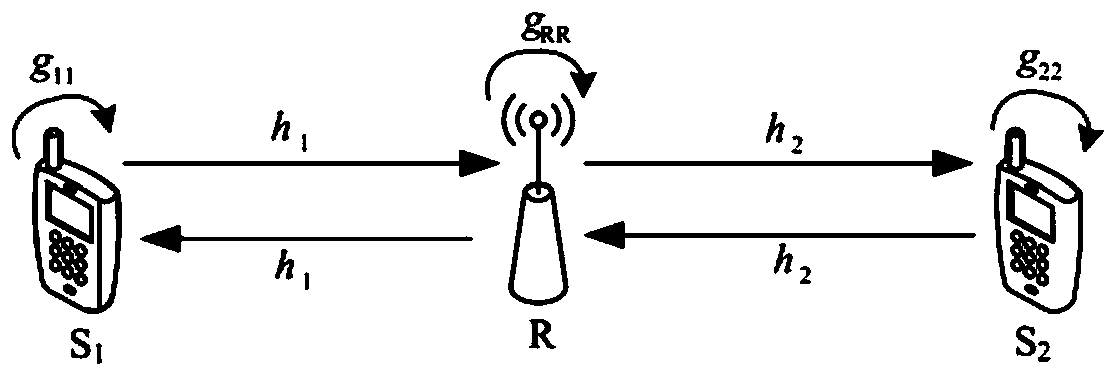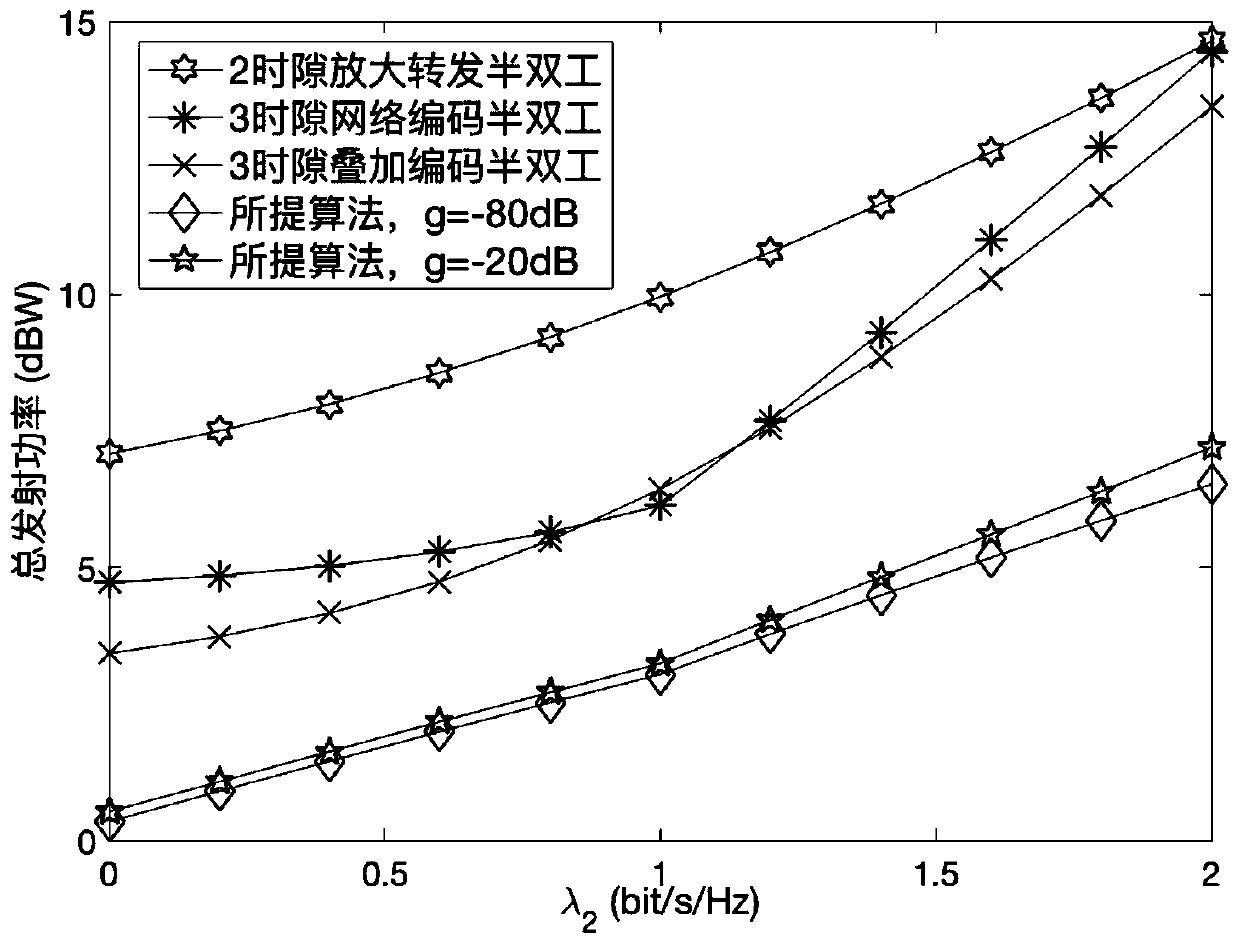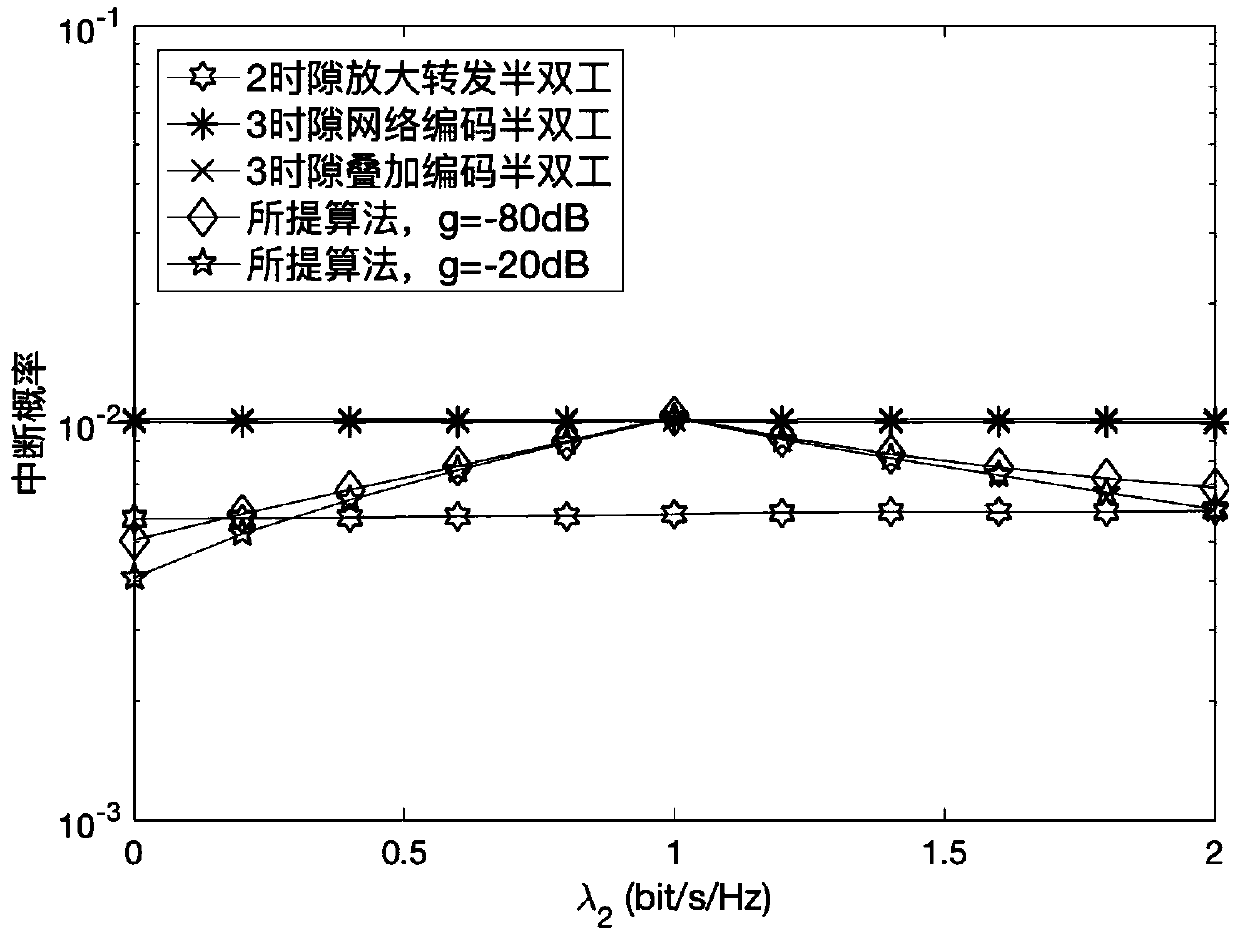Method for controlling node transmitting power of full duplex bidirectional relay system
A relay node and transmission power technology, applied in the field of wireless communication, can solve the problem of low energy consumption in full-duplex cooperative diversity systems
- Summary
- Abstract
- Description
- Claims
- Application Information
AI Technical Summary
Problems solved by technology
Method used
Image
Examples
Embodiment Construction
[0076] The present invention will be described in further detail below in conjunction with the accompanying drawings and embodiments.
[0077] see figure 1 , the present invention adopts a superposition coded full-duplex two-way relay system node transmission power control method. In the relay system, there are three nodes, namely two source nodes and one relay node, all of which work in frequency non-selective Rayleigh fading Full-duplex mode in a channel environment. Among them, S 1 and S 2 is the source node, and R is the decoding and forwarding relay node located between the source nodes. Each node in the system can obtain accurate channel state information through channel estimation. Using channel knowledge and according to the data rate requirements of the source node, the transmit power of the source node and the relay node transmitter and the superposition coding power allocation factor at the relay node are dynamically adjusted. Under the condition of meeting the p...
PUM
 Login to View More
Login to View More Abstract
Description
Claims
Application Information
 Login to View More
Login to View More - R&D
- Intellectual Property
- Life Sciences
- Materials
- Tech Scout
- Unparalleled Data Quality
- Higher Quality Content
- 60% Fewer Hallucinations
Browse by: Latest US Patents, China's latest patents, Technical Efficacy Thesaurus, Application Domain, Technology Topic, Popular Technical Reports.
© 2025 PatSnap. All rights reserved.Legal|Privacy policy|Modern Slavery Act Transparency Statement|Sitemap|About US| Contact US: help@patsnap.com



